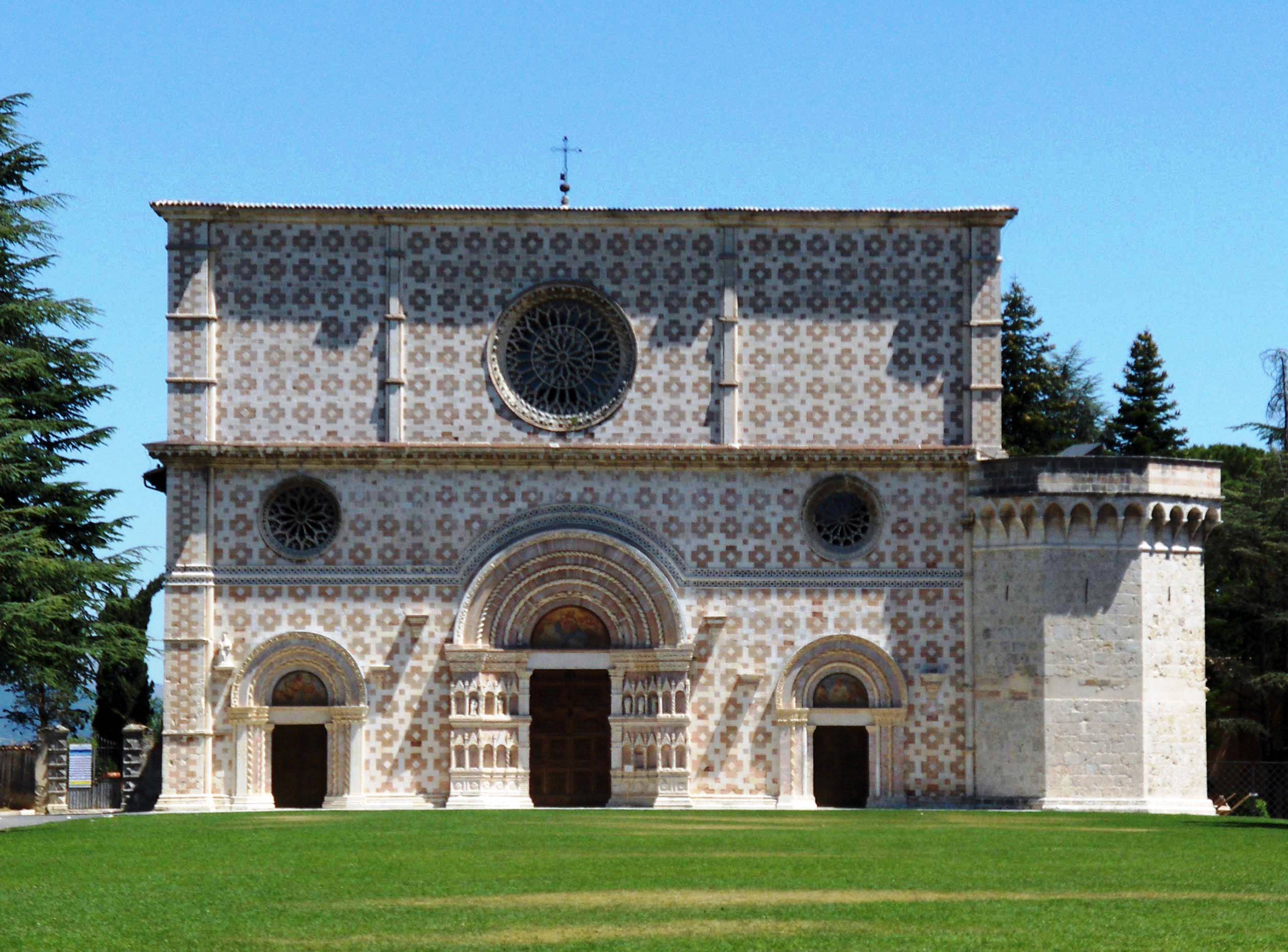|
Fagnano Alto
Fagnano Alto is a ''comune'' and town in the province of L'Aquila in the Abruzzo region of Italy. Transport Fagnano has a station on the Terni–Sulmona railway, with trains to L'Aquila and Sulmona Sulmona (; ) is a ''comune'' (municipality) in the province of L'Aquila, in the Italy, Italian region of Abruzzo. It is located in the Valle Peligna, a plain once occupied by a lake that disappeared in prehistoric times. In the ancient era, it was .... References {{Abruzzo-geo-stub ... [...More Info...] [...Related Items...] OR: [Wikipedia] [Google] [Baidu] |
Abruzzo
Abruzzo (, ; ; , ''Abbrìzze'' or ''Abbrèzze'' ; ), historically also known as Abruzzi, is a Regions of Italy, region of Southern Italy with an area of 10,763 square km (4,156 sq mi) and a population of 1.3 million. It is divided into four Provinces of Italy, provinces: Province of L'Aquila, L'Aquila, Province of Teramo, Teramo, Province of Pescara, Pescara, and Province of Chieti, Chieti. Its western border lies east of Rome. Abruzzo borders the region of Marche to the north, Lazio to the west and northwest, Molise to the south and the Adriatic Sea to the east. Geographically, Abruzzo is divided into a mountainous area in the west, which includes the highest massifs of the Apennines, such as the Gran Sasso d'Italia and the Maiella, and a coastal area in the east with beaches on the Adriatic Sea. Abruzzo is considered a region of Southern Italy in terms of its culture, language, economy, and history, though in terms of physical geography, it is often considered part of Cen ... [...More Info...] [...Related Items...] OR: [Wikipedia] [Google] [Baidu] |
Province Of L'Aquila
The province of L'Aquila () is the largest, most mountainous and least densely populated Provinces of Italy, province of the Abruzzo region of Italy. It comprises about half the landmass of Abruzzo and occupies the western part of the region. It has borders with the provinces of Province of Teramo, Teramo to the north, Province of Pescara, Pescara and Province of Chieti, Chieti to the east, Province of Isernia, Isernia (in Molise region) to the south and Province of Frosinone, Frosinone, Metropolitan City of Rome Capital, Rome and Province of Rieti, Rieti (in Lazio region) to the west. Its capital is the city of L'Aquila. The province of L'Aquila includes the highest mountains of the Apennines (Gran Sasso d'Italia, Gran Sasso, Maiella and Velino-Sirente), their highest peak, Corno Grande, the high plain of Campo Imperatore, and Europe's southernmost glacier, the Calderone glacier, Calderone. The province's major rivers are the Aterno-Pescara, Sangro, Liri, Salto, and the Turano; i ... [...More Info...] [...Related Items...] OR: [Wikipedia] [Google] [Baidu] |
Ripa Di Fagnano Alto
Ripa di Fagnano Alto is a village in the Province of L'Aquila, in the Abruzzo, region of Italy. The village is situated on a mountain and over looks the east of the region. Its last recorded population was 93 people. History Founding Ripa comes into historical notes in the late 1230s. It is believed that the village was founded during Frederick II's order to develop defensive outposts along the Abruzzo mountain ranges. Other villages such as Collepietro and Tocco are also believed to have been founded in the same era, close to when the region's capital L'Aquila, being founded in 1240. World War II Following World War II, a large percentage of Ripa's population emigrated, after the German occupation of the village had left little for the future of the new generation. Most of the towns people emigrated to Canada, while there were notable numbers who emigrated to Australia, the United States and Argentina. It is considered to be the main reason why the population has diminished to ... [...More Info...] [...Related Items...] OR: [Wikipedia] [Google] [Baidu] |
National Institute Of Statistics (Italy)
The Italian National Institute of Statistics (; Istat) is the primary source of official statistics in Italy. The institute conducts a variety of activities, including the census of population, economic censuses, and numerous social, economic, and environmental surveys and analyses. Istat is the largest producer of statistical information in Italy and is actively involved in the European Statistical System, which is overseen by Eurostat. History The Italian National Institute of Statistics () was established by Legislative decree no. 1162 on 9 July, 1926, as the Central Institute of Statistics () in order to replace the General Statistics Division of the Ministry of Agriculture, Food Sovereignty and Forests (Italy), Ministry of Agriculture. Corrado Gini was established as the first director of the institute, under the authority of the head of state. The institute, with a staff of about 170 workers, was charged with publishing the data of the 6th general population census, gener ... [...More Info...] [...Related Items...] OR: [Wikipedia] [Google] [Baidu] |
Comune
A (; : , ) is an administrative division of Italy, roughly equivalent to a township or municipality. It is the third-level administrative division of Italy, after regions () and provinces (). The can also have the City status in Italy, title of (). Formed according to the principles consolidated in Medieval commune, medieval municipalities, the is provided for by article 114 of the Constitution of Italy. It can be divided into , which in turn may have limited power due to special elective assemblies. In the autonomous region of the Aosta Valley, a is officially called a in French. Overview The provides essential public services: Civil registry, registry of births and deaths, registry of deeds, and maintenance of local roads and public works. Many have a (), which is responsible for public order duties. The also deal with the definition and compliance with the (), a document that regulates the building activity within the communal area. All communal structures ... [...More Info...] [...Related Items...] OR: [Wikipedia] [Google] [Baidu] |
Town
A town is a type of a human settlement, generally larger than a village but smaller than a city. The criteria for distinguishing a town vary globally, often depending on factors such as population size, economic character, administrative status, or historical significance. In some regions, towns are formally defined by legal charters or government designations, while in others, the term is used informally. Towns typically feature centralized services, infrastructure, and governance, such as municipal authorities, and serve as hubs for commerce, education, and cultural activities within their regions. The concept of a town varies culturally and legally. For example, in the United Kingdom, a town may historically derive its status from a market town designation or City status in the United Kingdom, royal charter, while in the United States, the term is often loosely applied to incorporated municipality, municipalities. In some countries, such as Australia and Canada, distinction ... [...More Info...] [...Related Items...] OR: [Wikipedia] [Google] [Baidu] |
Province Of L'Aquila
The province of L'Aquila () is the largest, most mountainous and least densely populated Provinces of Italy, province of the Abruzzo region of Italy. It comprises about half the landmass of Abruzzo and occupies the western part of the region. It has borders with the provinces of Province of Teramo, Teramo to the north, Province of Pescara, Pescara and Province of Chieti, Chieti to the east, Province of Isernia, Isernia (in Molise region) to the south and Province of Frosinone, Frosinone, Metropolitan City of Rome Capital, Rome and Province of Rieti, Rieti (in Lazio region) to the west. Its capital is the city of L'Aquila. The province of L'Aquila includes the highest mountains of the Apennines (Gran Sasso d'Italia, Gran Sasso, Maiella and Velino-Sirente), their highest peak, Corno Grande, the high plain of Campo Imperatore, and Europe's southernmost glacier, the Calderone glacier, Calderone. The province's major rivers are the Aterno-Pescara, Sangro, Liri, Salto, and the Turano; i ... [...More Info...] [...Related Items...] OR: [Wikipedia] [Google] [Baidu] |
Italy
Italy, officially the Italian Republic, is a country in Southern Europe, Southern and Western Europe, Western Europe. It consists of Italian Peninsula, a peninsula that extends into the Mediterranean Sea, with the Alps on its northern land border, as well as List of islands of Italy, nearly 800 islands, notably Sicily and Sardinia. Italy shares land borders with France to the west; Switzerland and Austria to the north; Slovenia to the east; and the two enclaves of Vatican City and San Marino. It is the List of European countries by area, tenth-largest country in Europe by area, covering , and the third-most populous member state of the European Union, with nearly 59 million inhabitants. Italy's capital and List of cities in Italy, largest city is Rome; other major cities include Milan, Naples, Turin, Palermo, Bologna, Florence, Genoa, and Venice. The history of Italy goes back to numerous List of ancient peoples of Italy, Italic peoples—notably including the ancient Romans, ... [...More Info...] [...Related Items...] OR: [Wikipedia] [Google] [Baidu] |
Terni–Sulmona Railway
The Terni–Sulmona railway is a regional railway line in central Italy, managed by Rete Ferroviaria Italiana. It links three regions, Umbria, Lazio and Abruzzo, and three Provinces of Italy, provincial capitals: Terni, Rieti and L'Aquila. Together with the Sulmona–Isernia railway it forms a north–south corridor through the Apennine Mountains, Apennines in central Italy. Its route is the result of two unfinished railways that had to meet in Rieti: the Pescara–L'Aquila–Rome line, and the Terni–Avezzano–Roccasecca line. History After the Italian unification and the History of rail transport in Italy, widespread start of railway constructions, many talks started about how to link the Abruzzo region to its new capital, Rome. It was decided that the railway would start from Pescara, reach Sulmona and L'Aquila, then cross the Apennine Mountains at the Sella di Corno pass and then reach Rieti, where the line had to continue towards Rome. Rieti also should have been the sta ... [...More Info...] [...Related Items...] OR: [Wikipedia] [Google] [Baidu] |
L'Aquila
L'Aquila ( ; ; ) is a city and ''comune'' in central Italy. It is the capital city of the Province of L'Aquila and the Abruzzo region in Italy. , it has a population of 69,902. Laid out within medieval walls on a hill in the wide valley of the Aterno-Pescara, Aterno river, it is surrounded by the Apennine Mountains, with the Gran Sasso d'Italia to the north-east. L'Aquila sits on a hillside in the middle of a narrow valley; the tall snow-capped mountains of the Gran Sasso massif flank the town. A maze of narrow streets, lined with Baroque and Renaissance buildings and churches, open onto elegant piazzas. Home to the University of L'Aquila, it is a lively college town and, as such, has many cultural institutions: a Repertory, repertory theatre, a symphony orchestra, a fine art academy, a state conservatory and a film institute. There are several ski resorts in the surrounding province (Campo Imperatore, Ovindoli, Pescasseroli, Roccaraso, Scanno, Abruzzo, Scanno). Geography Close ... [...More Info...] [...Related Items...] OR: [Wikipedia] [Google] [Baidu] |
Sulmona
Sulmona (; ) is a ''comune'' (municipality) in the province of L'Aquila, in the Italy, Italian region of Abruzzo. It is located in the Valle Peligna, a plain once occupied by a lake that disappeared in prehistoric times. In the ancient era, it was one of the most important cities of the Paeligni and is known for being the native town of the Roman poet Ovid, of whom there is a bronze statue, located on the town's main road. History Ancient era Sulmona was one of the principal cities of the Paeligni, an Italic tribe, but no notice of it is found in history before the Ancient Rome, Roman conquest. A tradition alluded to by Ovid and Silius Italicus, which ascribed its foundation to Solymus, a Phrygian and one of the companions of Aeneas, is evidently a mere etymological fiction. The first mention of Sulmo occurs in the Second Punic War, when its territory was ravaged by Hannibal in 211 BC, who, however, did not attack the city itself. Its name is not noticed during the Social War (9 ... [...More Info...] [...Related Items...] OR: [Wikipedia] [Google] [Baidu] |





